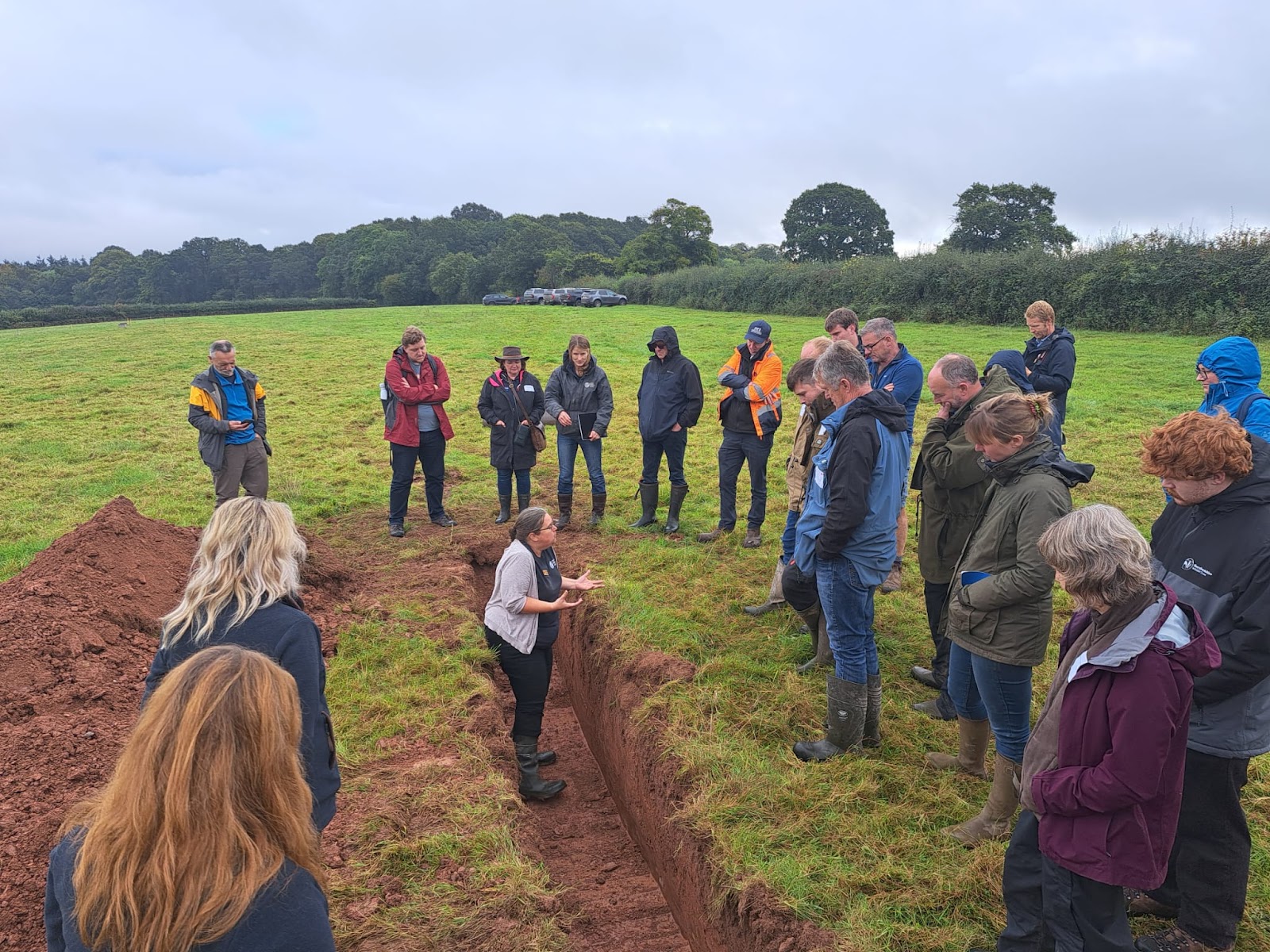
The FCT field day was an event to shine a light on the sustainable solutions benefiting farmers economically, socially and environmentally. The focus was on mixed agricultural systems, as well as celebrating those who are doing the most to reduce greenhouse gas emissions and sequester carbon into their soils.
On the 25th September 2024, our Annual Field Day brought together farmers from all over the country, including the winners of our past FCT Soil and Carbon Farmer of the Year competitions, to hear about the exciting developments in sustainable agriculture. In addition, we were grateful to HSBC UK Agriculture who helped sponsor the Carbon Farmer of the Year Competition and to all our supporters of the Annual Field Day – Cross Compliance Solutions, First Milk, Shearwell, Velcourt and Yeo Valley.
The event was held at Boycefield Farm in Dilwyn, courtesy of Billy Lewis, Soil Farmer of the year (2022) and the Lewis family. The day was a grey one with a few showers but did not dampen any spirits or the curiosity of the farmers that enjoyed the day!
Our delegates arrived ready for a 10am start which was officially kicked off by a welcome from FCT CEO Liz Bowles and an introduction to the farm by host Billy Lewis.
Billy Lewis – Our host and 2022 Soil Farmer of the Year talking about how the farms’ approach of integrating livestock and herbal leys into a previously intensive arable system has rejuvenated soil health, drastically reduced fertiliser and feed inputs, whilst boosting profitability. Billy also mentioned the challenges his farm has been facing, with the changing climate and consistently wet weather proving to be high on the list.
We enjoyed a circuit of the farm to join workshops on subjects including adapting arable rotations to build fertility and resilience in a changing climate, mob grazing and the importance of soil testing. We heard about developments that have been made on Boycefield farm, as well as from farmers implementing similar systems across the country.
We have captured a snapshot of the workshops below:
Soil clinic – chaired by Becky Willson (FCT)
We heard from our very own Becky Wilson and Niels Corfield, a regenerative agriculture advisor.
Niels and Becky focussed on firstly, and most importantly, how the health of the soil is crucial to any agricultural system. Having a deeper understanding of what to look for within the soil aids farmers in assessing their own soils and tailoring their systems to increase soil health and fertility.
Becky brought us around the freshly dug soil pit to demonstrate the levels of compaction that occur at different depths. Highlighting the importance of less dense, yet stable soil in the top layer so that root growth of grasses and herbal leys are not hindered by increased soil density. It was pointed out that Billy Lewis’s mob grazing style was contributing to the meadow’s low soil density and therefore thriving grass system. As the stock is moved frequently, there is little time to compact the soil by trampling. Becky also highlighted the importance of earthworms for soil health. Earthworms are a key indicator of good soil health as they provide a multitude of benefits. Their burrowing increases spaces within the top layers of the soil which allow in water and air which promotes root growth for pastures through reduced compaction. Additionally, as Becky mentioned, their powers of nutrient cycling cannot be understated. Earthworms feed on organic matter which is excreted into plant available nutrients, speeding up pasture growth.
After Becky’s talk on soil qualities Niels took over to discuss a few practical methods (without the use of fancy gadgets) farmers can use to assess their soil health. With only the use of a spade and an inspection of what’s going on below the grass you can tell a lot about the soil. Niels encouraged the guests to go out into their fields and start to collect samples. He demonstrated the method of collecting a core sample by inserting a spade to a depth of around 30 cm on three sides and used the last side as a hinge to lever up a block of soil to inspect. Once the sample was out of the ground, he highlighted the relative ease of which the soil broke up as well as pointing out the abundance of earthworms, noting that this isn’t the case for a lot of agricultural soils.
Livestock and mob grazing – chaired by Stefan Marks (FCT)
In this talk we heard from Tom Burge, an upland beef and sheep farmer, Billy Lewis, the host farmer, as well as Dan Smith, a farm manager running a commercial, net zero livestock farm alongside being a facilitator at the Herefordshire Rural Hub. They talked about their experiences with mob grazing, grass quality and the lessons they have learned experimenting with grazing systems.
In this session, Billy, Tom, and Dan discussed the benefits as well as the challenges involved with mob grazing while drawing on their shared experience of experimenting with this type of grazing system.
Tom Burge is a 4th generation farmer, owning an upland grazing farm in North Exmoor rearing over 1,000 Romney X ewes and 500 Scottish Blackface ewes. As well as 100 Angus suckler cows. After setting aside a 150 acre field trial with the aim of reducing fertiliser application, he began experimenting with mob grazing. He found that moving stock regularly (in his case every 2-3 days) and long resting periods resulted in improved grass quality and increased grass growth. All the panellists concurred that long resting periods for the grassland is crucial for increased grass quality and plant diversity which leads to more resilient grasslands.
In terms of economics, all the panellists agreed that the switch to mob grazing resulted in higher live weights and milk yields from their cattle and sheep. However, it was interesting to hear that these yield increases were marginal compared to the reduction in costs which resulted from the change of system. Dan found that within his new system, he could keep sheep outside all year round, including during lambing. He noticed that less bacterial infections and instances of pneumonia were occurring when he made these changes. Billy also noted the lack of fly related infections on his cattle on his mob grazing system which resulted in lower veterinary costs and better welfare. Although Billy still has periods through the winter where cattle are kept inside, these periods have reduced and therefore feed costs have decreased as a result. All the panellists concluded that optimising for a low input system was of great benefit to not only their pockets but the health of the stock as well.
An insightful question came from one of the listeners of the talk, who asked; how do you measure the changes in pasture performance? All three panellists admitted that they didn’t formally measure or record grass growth or quality of. Through anecdotal evidence and multiple decades of experience growing grass and farming on their respective farms they could see the difference in the quality of their grass which has translated into the quality of their stock and produce. Dan Smith added to this, highlighting that the preferred measure of performance is through financial gains, where all three of panellists have found a financial benefit.
A second question was fielded around the time consuming nature of mob grazing after Billy mentioned his rotations may only last 6-12 hours on some of his more intensely grazed meadows. He has found that frequent livestock movement isn’t as unmanageable as one might think. He proceeded to demonstrate the ease of which he can move electric fencing hexagonal fence posts (as seen in the picture below). These structures rotate along the ground as Billy moves the end of the fence, saving time by not having to take out every fence pole and place it in a different location in the field. Through experience, Billy often decides when to move his cattle by eye and knows that a system that incorporates flexibility works best for him. This certainly helps with the weather challenges that the three panellists agreed was a main limiting factor to their system. Droughts and periods of heavy rain (which were wonderfully demonstrated throughout the day) are challenges where flexibility is a crucial mitigator. Billy with his free moving electric fence pointed out that he can avoid waterlogged areas in order to protect the soil and grassland from trampling which is even more of a danger in wet conditions.
Arable/ Herbal Leys – chaired by Tilly Kimble-Wilde
We heard from Angus Gowthorpe (mixed farmer and Soil Farmer of the Year 2018 finalist), Edward Gent (Cambridge arable farmer who has been no-till for 16 years) and FCT’s Anthony Ellis (FCT farm carbon and soil advisor and mixed farmer). The talk focussed on their experiences with diversifying arable rotations, sometimes with herbal leys as well as their different approaches to grazing these areas.
Angus Gowthorpe, who manages a mixed farm in North Yorkshire, spoke about his transition from conventional to regenerative farming and how herbal leys have played a crucial role in this shift. By integrating a mix of species into his rotation, including deep-rooting herbs such as chicory and plantain, he has seen significant improvements in soil structure and organic matter. Angus highlighted how the diversity of plant species in the herbal leys helps build resilience in the system, reducing reliance on chemical inputs. He highlighted how grazing these leys with his cattle further stimulates root growth, enhancing the biology of the soil, contributing to a more productive and resilient farm ecosystem. The sentiments of this approach were echoed by both Edward and Anthony who had implemented similar systems.
Afternoon Sessions: The economic and climate impact of ‘regen’
Following lunch, we moved into a panel discussion Chaired by James Daniel with presentations from Anthony Ellis (FCT), Angus Gowthorpe, Tom Burge & Nick Down (Velcourt Farming Ltd).
James Daniel – Founder of Precision Grazing, whose primary objective is to optimise performance from pasture, James works across the UK helping farmers to implement and manage their grazing systems alongside ensuring family quality of life for farmers.
Angus Gowthorpe – mixed farmer and Soil Farmer of the Year 2018 finalist. Angus has been at the forefront of the regenerative transition in the UK and continues to push the envelope on what defines a sustainable farming system.
Tom Burge – Upland beef and sheep farmer whose move to a regenerative, grazing-based system has helped to eliminate inputs and transform the finances on his challenging Exmoor farm
Nick Down – Nick is the Head of Sustainability for Velcourt Ltd. Velcourt directly manages 57,000 hectares and provides advice in both the arable and dairy sectors across the UK. Nick oversees the farming operation of the Yattendon Estate in West Berkshire. The estate is going through a transition to a more sustainable farming system, incorporating more space for nature and enhancing carbon sequestration under an ambitious environmental delivery program. The farm is also a LEAF demonstration farm.
First each of the panel members presented an overview of their farming system, the regenerative practices they’ve employed and the subsequent improvements this has made to their business carbon footprint, resilience and profitability.
Angus shared with us a side by side comparison of his arable operations between his previous conventional system and his current low-input regen system for winter wheat production. From this slide it is obvious to see what financial benefits arise from converting to a regen system. Firstly, his in-field operations have reduced from four operations to only using direct drilling on his fields. This saves him a total of £142 per hectare. Additionally, a reduction of his fertiliser inputs saved his business £189 per hectare. Through soil analysis he found that his past applications of P and K were superfluous to crop requirements. He has also reduced reliance on fungicides and plant growth regulators by £103/ha. The reduction in inputs has given Angus an ability to withstand a lower yield without reduction in enterprise margin. At current prices he calculated that this was equivalent to around 2.3 tonnes/ ha or around a 30% reduction in yield.
A perspective of the greenhouse gas emissions reductions and financial benefits of regenerative agriculture from livestock farming came from Tom Burge who kindly shared his numbers before and after adopting his new farming strategy.
From starting his journey in 2017, he has eliminated use of fertiliser on his pastures, significantly reduced reliance on external feed and fuel, as well as reduced the number of hours of manhours worked on his farm. This has all translated into a steady reduction of on-farm emissions (expressed as kgCO2e per kg live weight of his stock). Due to implementing mob grazing strategies, pasture growth has increased by 0.9 tonnes of dry matter per hectare, displacing 36 tonnes of fertiliser and 72 tonnes of feed between 2017 and 2022. On top of the 1.66kgCO2e per kg of live weight, this has saved Tom’s business financially, to a tune of £24,000 per year. By 2022, Tom realised that the increasing cost of inputs outweighed the potential added value of his outputs, making these inputs un-economical to use.
Breakout workshops on field trials, weatherproof farming and composting
Composting: Billy Lewis
Billy Lewis showed us his farm-yard manure composting process. After buying a windrow compost turner second hand, Billy is able to easily turn the compost pile to aerate it. Ensuring good air flow is key to creating compost, as aerobic microorganisms feed on the organic components and convert them into a nutrient rich soil amendment. Composts are much more stable than farm yard manures, providing a more consistent and slow release of nutrients, therefore, benefitting soil health in the longer term. This slow release enhances soil health and pasture growth by reducing the amount of leaching and volatilisation that occurs. Billy explained how he adds different components to his compost depending on what is available, such as wood chips and apple peel from a nearby orchard.
Research Trials: Hannah Jones
Hannah Jones (Senior Soil and Carbon Advisor with FCT) led an insightful discussion on effectively planning and conducting field trials in a scientifically robust yet practical way. She began by explaining the essentials of multi-year farm trials, covering aspects like choosing crop options for trial strips, combining various tests within one field, and structuring controls to minimise the effects of natural variations on trial results.
A major focus was on understanding how different factors can influence outcomes and the importance of controls. For instance, in a trial introducing beans into crop rotation, it’s crucial to have both fertilised and unfertilised areas to determine if observed benefits are due to the nitrogen contribution from beans, the fertiliser itself, or just field characteristics. In livestock research, increasing population size reduces the impact of natural variation (e.g. individual susceptibility to disease), thereby making the data more statistically reliable. Randomly assigning animals to control and trial groups is also key, as it prevents biases that could affect outcomes; for example, having the first ewes going through the hurdle enter one field and the latter half go into another could unintentionally separate the flock by skittish and lazy animals, skewing results because they have different temperaments.
Hannah also shared ideas and trials setups which some of the attending farmers were considering. The conversation highlighted the value of data sharing—each farm is unique, but insights from one trial can benefit many. By participating in groups like the Innovate funded Nitrogen Climate Smart agriculture (NCS) project, farmers can connect, share findings, and collaborate on new practices. FCT advisors are available to help with planning and can connect participants with like-minded farmers to optimise trial efforts.
Weatherproof Farming: Niels Corfield
Niels delivered a presentation which demonstrated to us the importance of improving soil health for sustainable farming. Niels Corfield is a farm advisor interested in regenerative farms and landscapes.
He shared video examples of how compacted soils, often mistakenly thought to be saturated due to standing water, were actually preventing deeper water infiltration and leaving dry soil underneath. Healthy soil, with proper porosity, was shown to allow water to penetrate, “banking” moisture for dry periods, which is crucial for crop resilience in hot summers.
Niels made a case for weatherproofing farms to both rain and drought through a mixture of practices including soil management, mechanical interventions e.g sub soiling, mineral, and biological interventions. We looked at some of these in detail. A key takeaway was that root health is central to improving soil structure, and managing grazing or cropping practices to encourage root mass and density is a fundamental part of improving soil resilience and health.
The evidence presented showed that a move away from set stocking and changes in pasture management was able to extend grazing seasons, reduce the need for winter housing, and boost grass production. Data from various drought years showed how drought severely impacted grass growth across the UK. However, farms with better-managed soil saw increased productivity due to better water retention, emphasising the benefits of improving soil structure and retaining water during wet seasons for use during dry spells.
We were left with the idea that land provides honest feedback which can be seen and acted upon: It reveals the effectiveness of farming practices through direct observation and we were encouraged to inspect the land regularly ourselves in real-time with a range of tests, rather than solely relying on lab results.
Carbon Farmer of the Year 2024
This very interesting and insightful field day concluded with the presentation of carbon farmer of the year. It is the second year of the competition and is awarded to a farmer who is engaged with and passionate about reducing their business’s climate impact. The award focuses not only on changing management practices to reduce greenhouse gas emissions but also on understanding and enhancing carbon storage in farmland. We were delighted to be joined by the three finalists. Andrew Brewer was awarded the Carbon Farmer of the Year Award for 2024, presented by Steve Dunkley, our sponsor from HSBC Agriculture (seen in the picture below). Andrew is part of the Farm Net Zero project and low GHG farming has been a top priority for him and his farm for a number of years. He manages 500 Jersey X dairy cows across his 400 Ha farm in Fraddon, Cornwall. He stood out to the judges for his understanding and application of a range of practices to enable his pasture-based dairy farm to remove atmospheric carbon into soil, trees, and hedges, while simultaneously minimising farm GHG emissions by focusing on maximising forage intake for his dairy cows and minimising inclusion of supplementary concentrate feeds. Andrew also selectively breeds his cows to work well within his pasture-based system. There is an opportunity to tour his farm during a farm walk he is hosting on November 8th.
The other two finalists, Tom Burge and Jason Mitchell were praised for their continued efforts to mitigate greenhouse gas emissions in their businesses. The finalists awards were presented by David Cope, Head of sustainability at the Duchy of Cornwall who was also on the panel of judges (seen below). Tom Burge, who featured in the mob grazing workshop has done fantastic work cultivating a low input grazing system which has seen vast improvements in his grass quality and sequestration potential.
Similarly, Jason Mitchell is a Director of Greenville Dairies Ltd based in Newton Stewart, Northern Ireland. He has also been recognised for his continued effort to farm in a low carbon management system. At Greenville Dairies they have reduced emissions from their 850 strong dairy herd, largely through the application of genomics leading to greater feed efficiency alongside the development of a significant Anaerobic Digestion facility which sees them now taking in food waste alongside utilisation of cow manure to produce electricity, liquid natural gas (LNG) and digestate. Electricity and LNG are sold to the grid and to Companies such as Lakeland Dairies (their customer for their milk).
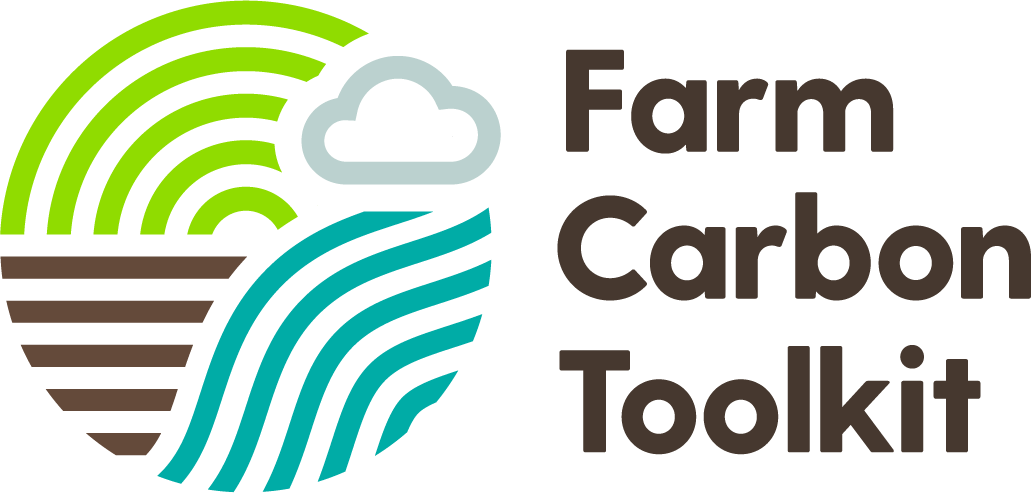

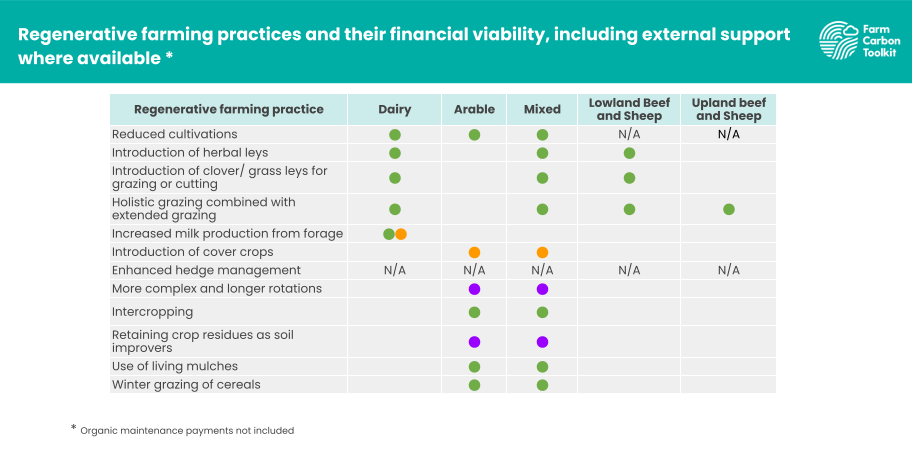





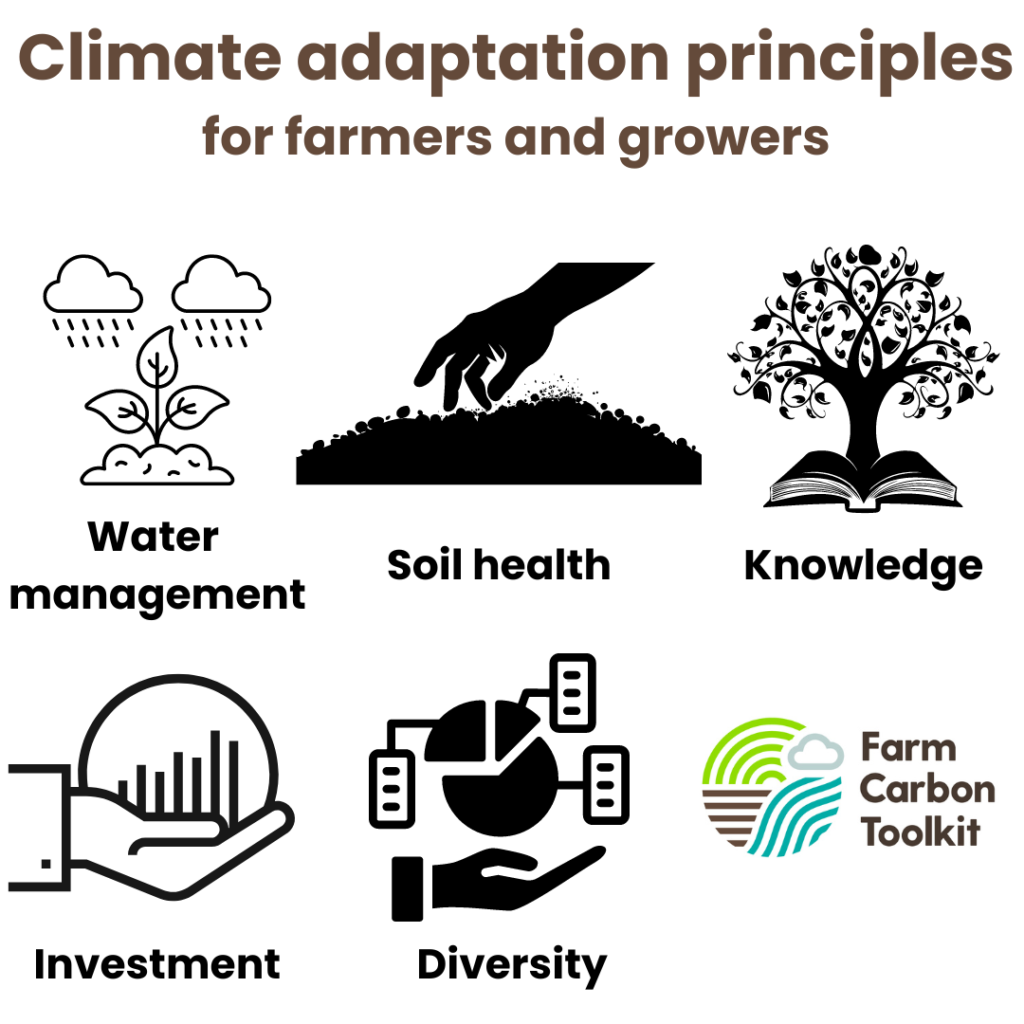
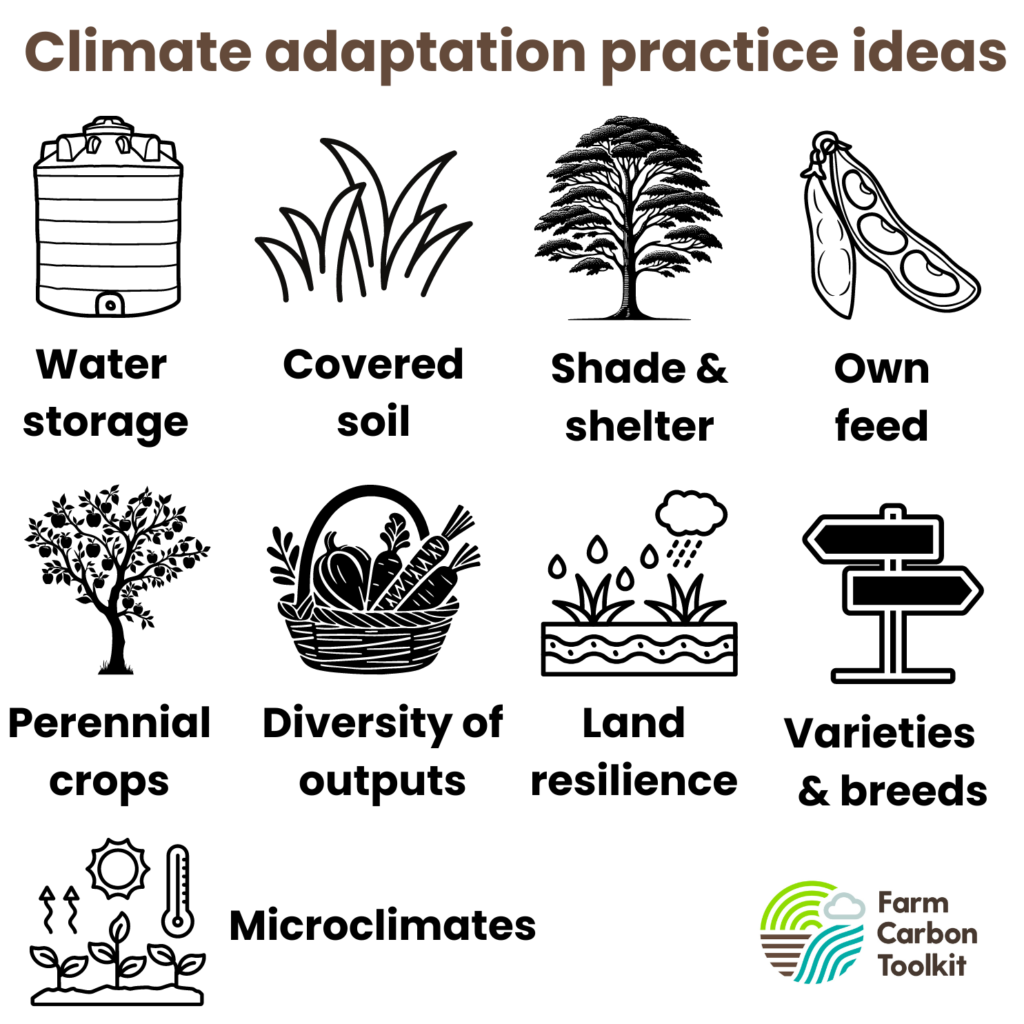

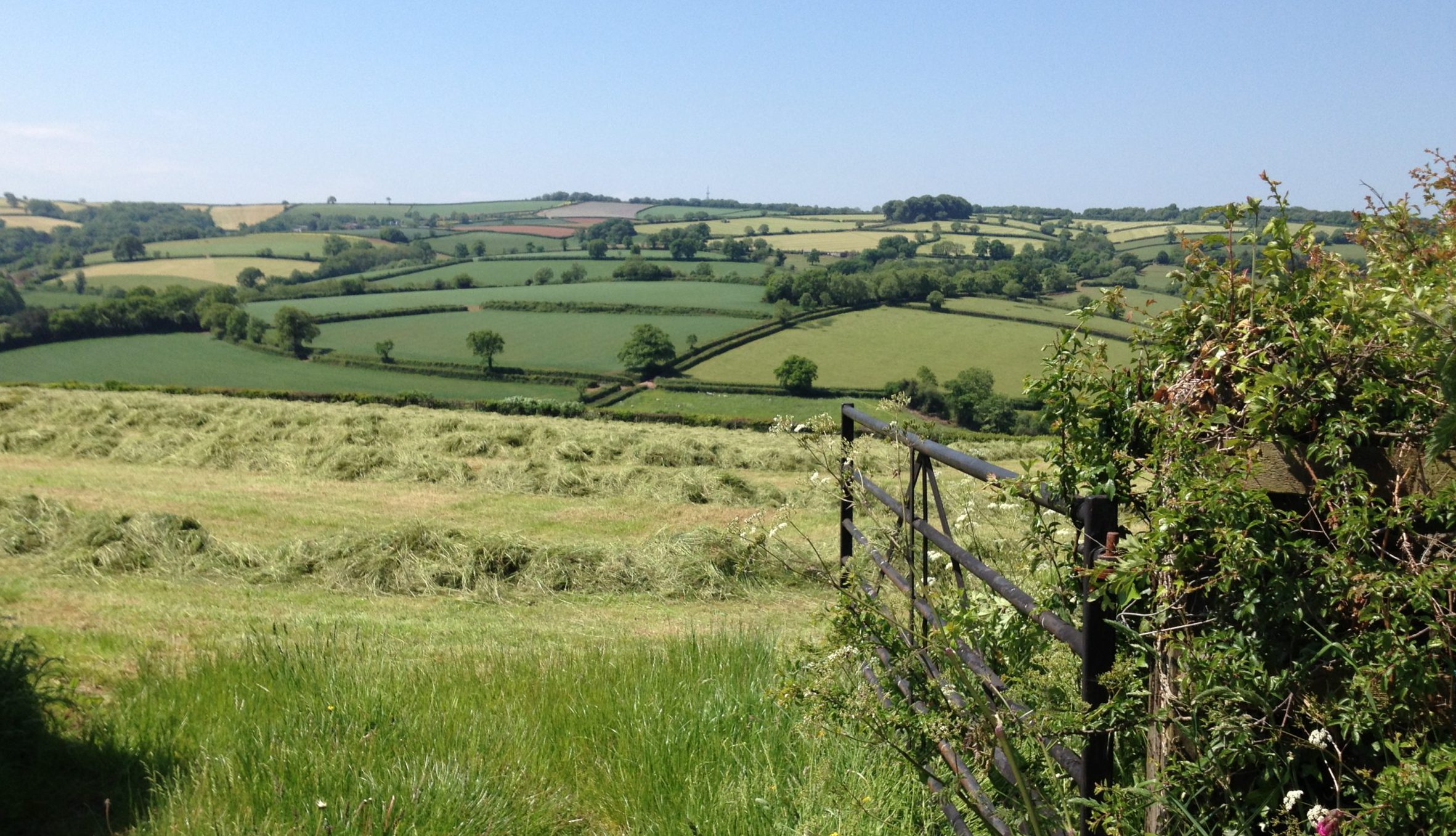
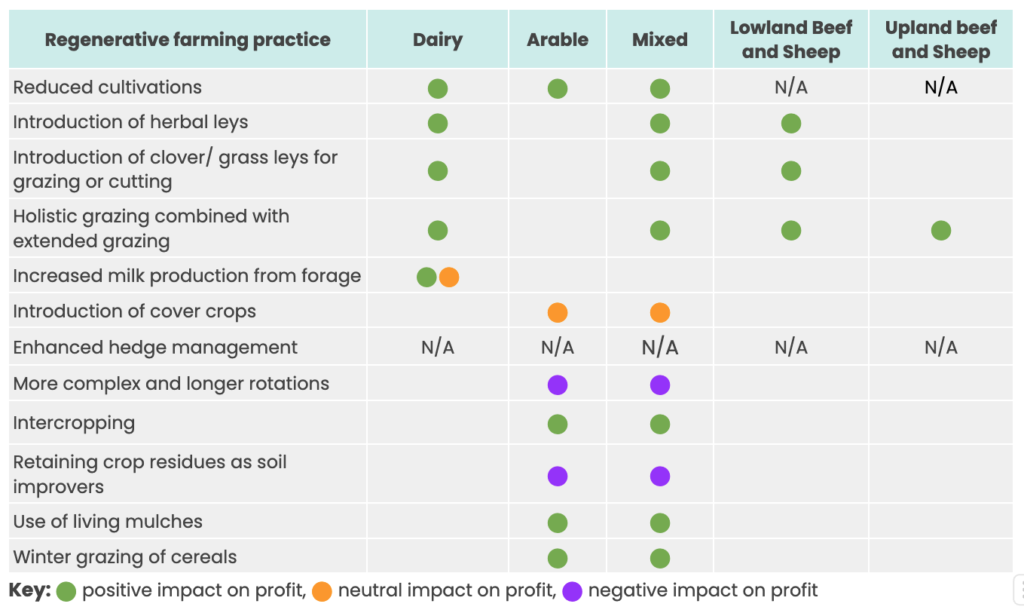
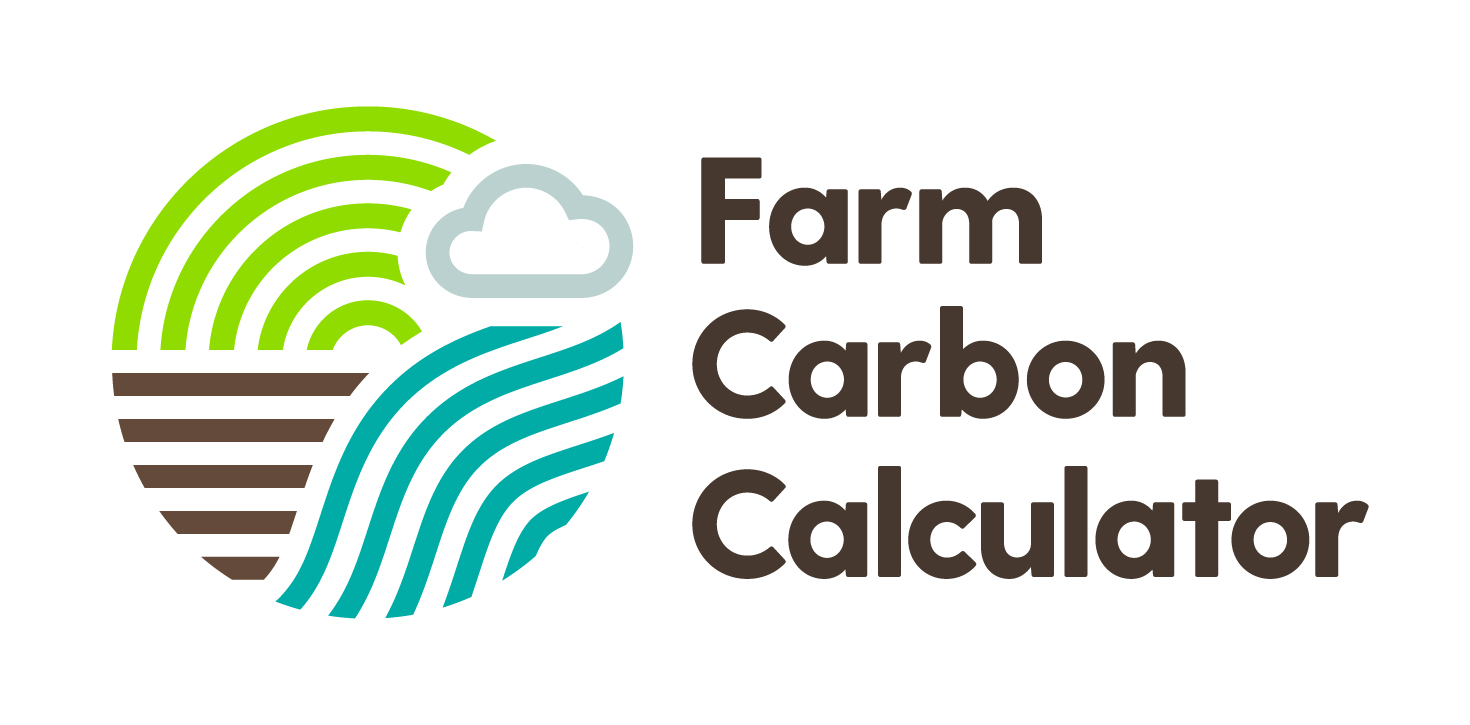

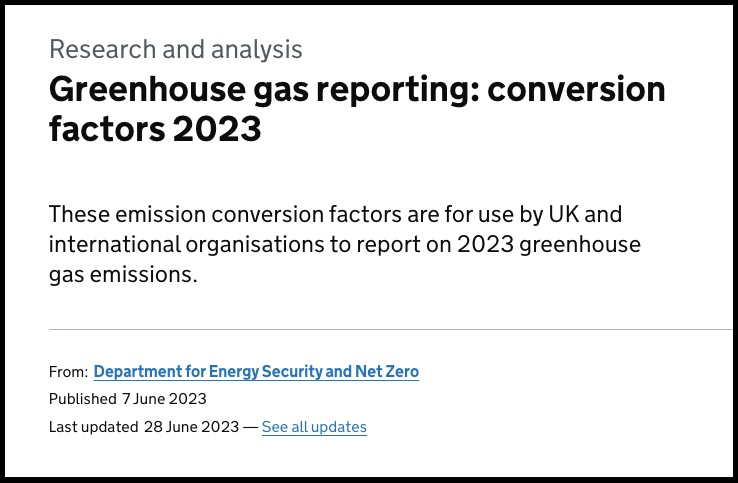
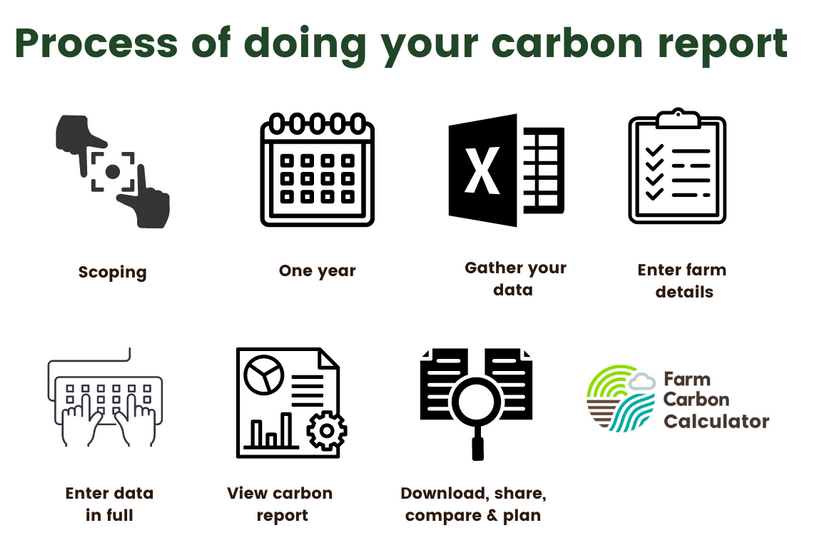
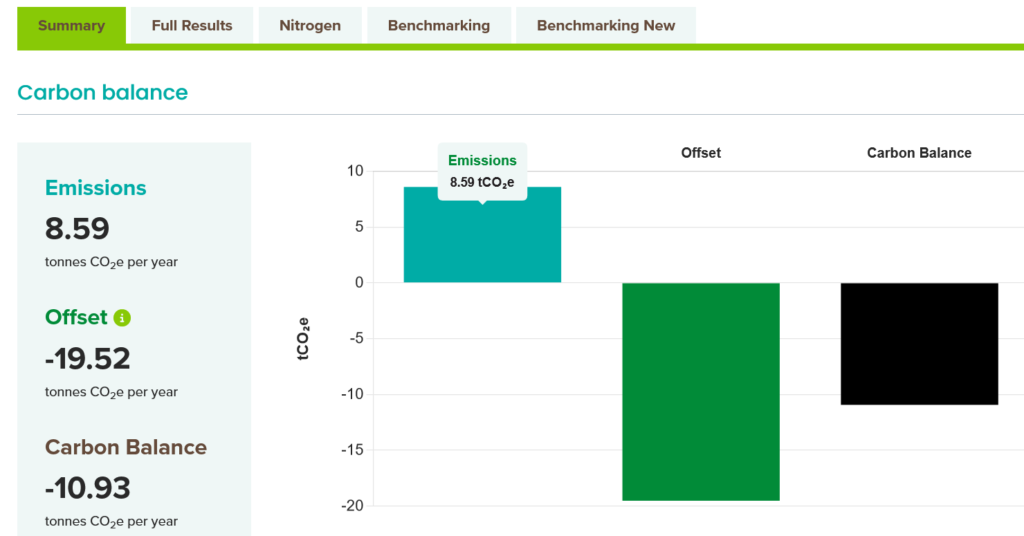



Recent Comments